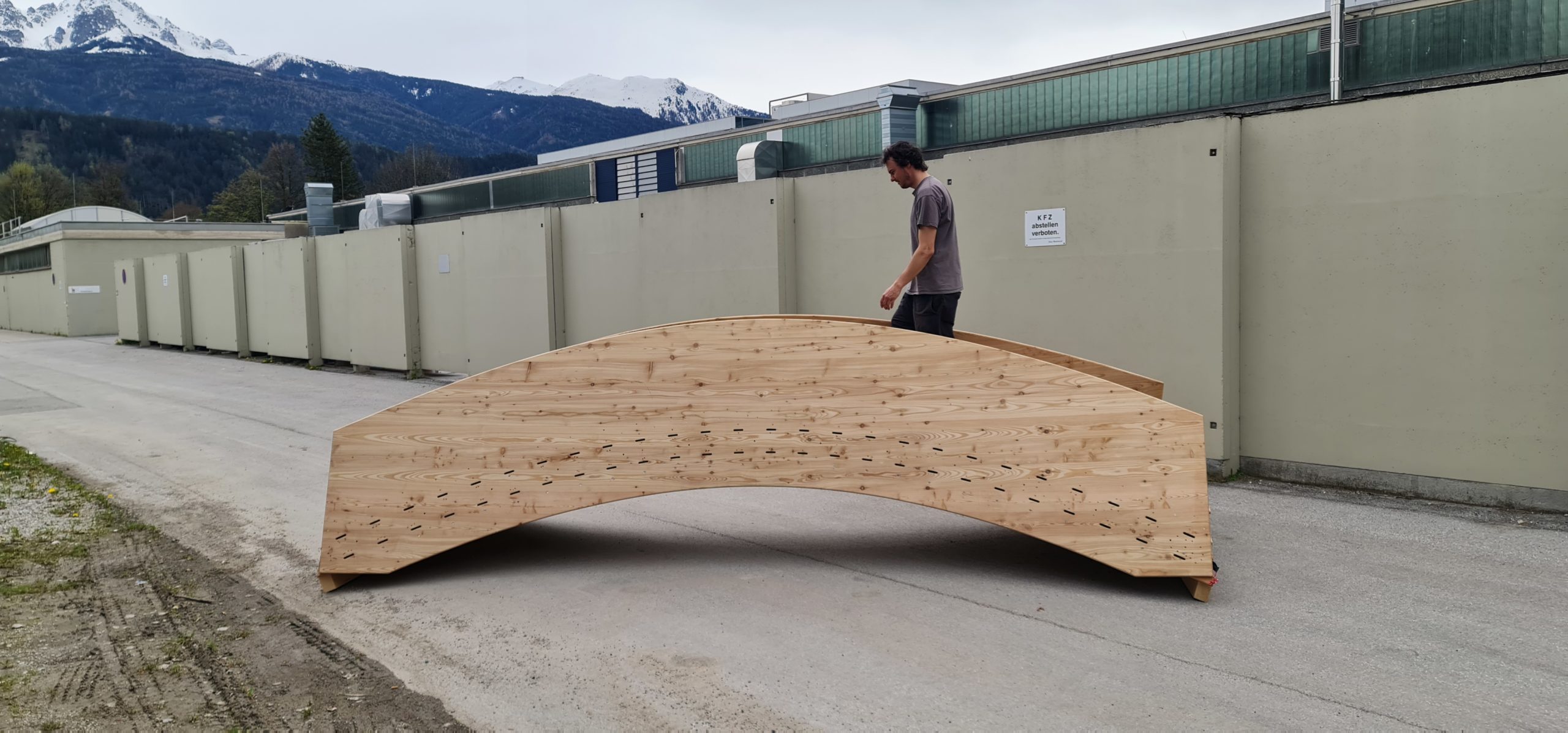Plates 2 Structures
Plates2Structures develops origami-inspired strategies to construct components and structures for the construction industry using wooden panels. These are produced flat and transported as compact packages to the construction site, where they are folded into their load-bearing form.
The combination of digital methods in timber construction and increased awareness of sustainability has led to a disruptive boom in the timber industry. In order to build faster, more resource efficient, less expensive and more sustainable, this project aims to focus on thin plate materials and their structural properties. Plates2Structures develops origami-inspired strategies to construct components and structures for the construction industry using wooden panels. These are manufactured flat and transported to the construction site as compact packages, where they are folded into their load-bearing form. Folding on this scale is made possible by technical aids such as cranes or tensioners. Depending on the type of folding method and geometry, either independent complex components or complete load-bearing structures can be produced with little waste.

The focus of this research is to further develop the fundamentals for load-bearing components or support structures made from folded sheet materials. Within the scope of the project, new and known folding patterns will be developed and adapted specifically for timber construction, so that they can be produced from thin wooden sheets. Subsequently, methods will be developed to produce them from wood panels and to fold them into shape, and to determine under which circumstances they offer advantages over conventional methods. In addition to the folding patterns, calculation and simulation methods will be developed to reliably predict structural properties not only in the final state, but also during the folding process.

These results will be combined with carpentry and manufacturing data in a digital model to define an optimized manufacturing and construction method for these new typologies. The approach will result in a holistic digital model that maps structural or manufacturing qualities, allowing designers to directly analyse designs for performance and manufacturability.
The Project is funded by the Think Wood initiative of the FFG.
Partners :
University Innsbruck / Institut of Design / structure and design / i.sd
University Innsbruck / Institut of Material Science / AB-Holzbau
Holzbau Saurer / Höfen / Austria
